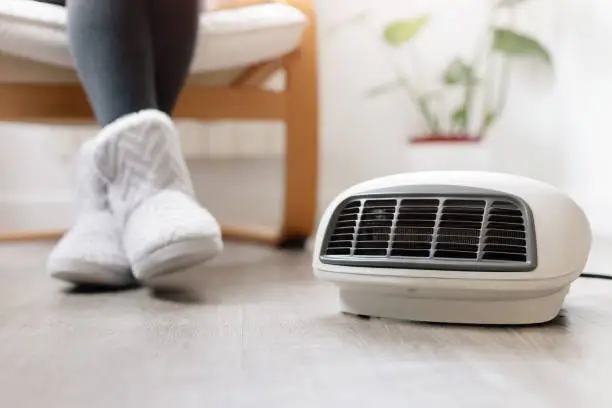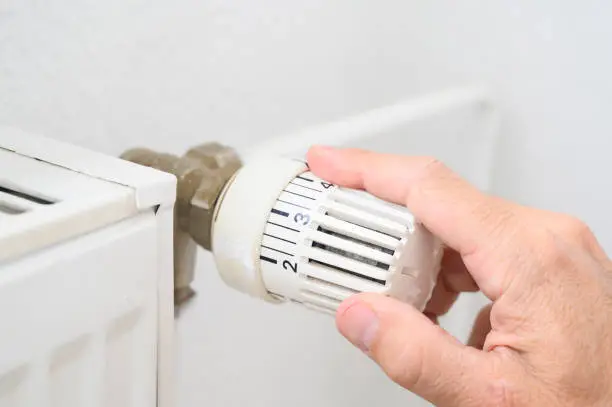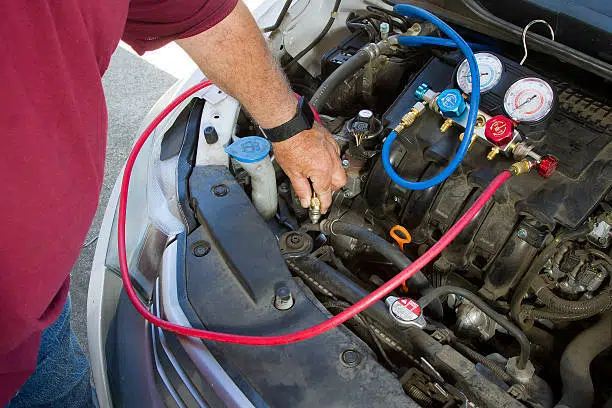
Table of Contents
Hey there! Welcome to our ultimate guide on choosing the perfect space heater for your home in 2024. As the chill of Canadian winters sets in, finding the right space heater can make a world of difference in your comfort and energy bills. Whether you’re looking to heat up a cozy corner or keep an entire room toasty, we’ve got you covered. Let’s dive in and explore everything you need to know to make an informed decision.
Types of Space Heaters: From Convection to Electric Space Heaters
Before we get into the nitty-gritty of choosing the right space heater, it’s essential to understand the different types available. Each type has its unique way of warming up your space, and knowing the differences can help you find the best fit for your needs.
- Convection Heaters: These heaters work by warming up the air in the room. They typically use a heating element and a fan to distribute the warm air evenly. Convection heaters are great for larger rooms and continuous heating.
- Radiant Heaters: Radiant heaters focus on warming up objects and people directly in their path, rather than heating the air. They’re perfect for spot heating and are often used in smaller spaces or for personal warmth.
- Fan-Forced Heaters: These heaters use an electric element and a fan to blow warm air into the room. They heat up quickly and are good for fast, short-term heating in specific areas.
- Oil-Filled Heaters: These resemble old-fashioned radiators and are filled with oil that heats up and radiates warmth. They are slow to heat up but retain heat well, making them energy-efficient for long-term use.
- Infrared Heaters: Infrared heaters use electromagnetic radiation to transfer heat directly to objects and people. They are energy-efficient and provide instant warmth, ideal for larger spaces and rooms with high ceilings.
- Electric Space Heaters: These encompass a variety of heater types, including convection, radiant, fan-forced, oil-filled, and infrared heaters, all powered by electricity. They offer versatility in heating options and are often chosen based on specific heating needs, room size, and energy efficiency requirements. Each type of electric space heater operates uniquely to deliver heat effectively, catering to different preferences and heating scenarios. Understanding these distinctions allows you to select the optimal electric space heater for your home or office environment.
Type of Heater | How It Works | Benefits | Ideal Use Cases |
|---|---|---|---|
Convection Heaters
| Warm up air in the room using a heating element and fan | Even heat distribution, good for large rooms | Larger rooms, continuous heating |
Radiant Heaters | Warm up objects and people directly in their path | Direct warmth, energy-efficient for small areas | Spot heating, small spaces, personal warmth |
Fan-Forced Heaters
| Use an electric element and fan to blow warm air into the room | Quick heating, portable | Fast, short-term heating, specific areas |
Oil-Filled Heaters | Heat up oil inside the heater, which then radiates warmth | Retains heat well, energy-efficient | Long-term use, consistent heating |
Infrared Heaters | Use electromagnetic radiation to transfer heat directly to objects and people | Instant warmth, energy-efficient | Larger spaces, rooms with high ceilings |
Key Factors to Consider
Now that you’re familiar with the types of space heaters, let’s talk about what you need to consider before making a purchase. It’s not just about picking the most powerful heater; you need to find one that suits your specific needs and living conditions.
Room Size and Heater Capacity
First and foremost, you need to match the heater’s capacity to the size of the room you want to heat. A heater that’s too small won’t warm the space effectively, while one that’s too powerful could waste energy. As a rule of thumb, you need about 10 watts of heating power for every square foot of space. So, for a 150-square-foot room, look for a heater with at least 1500 watts (or around 5000 BTUs).
Energy Efficiency
Energy efficiency is crucial, especially if you’ll be using your heater frequently. Look for heaters with energy-saving features like programmable timers, adjustable thermostats, and eco-modes. Checking for energy ratings and certifications like Energy Star can also help you choose a more efficient model.
Check out these 14 tips to save energy and improve efficiency in your home via the link below.
https://thehvacservice.ca/14-tips-to-save-energy-and-improve-efficiency-in-your-home/
Safety Features
Safety should always be a priority when selecting a space heater. Look for models with features like overheat protection, tip-over switches, and cool-to-the-touch surfaces. These features can prevent accidents and give you peace of mind, especially if you have kids or pets.
Noise Level
Depending on where you plan to use your space heater, noise can be a significant factor. For instance, if you need a heater for your bedroom or office, you might want to opt for a quieter model. Oil-filled heaters and some infrared heaters are known for their silent operation, making them ideal for noise-sensitive environments.
Portability and Ease of Use
If you plan to move your heater from room to room, portability is a key consideration. Look for heaters with wheels, handles, and lightweight designs. Additionally, features like remote controls, digital displays, and programmable timers can make operating your heater much more convenient.
Portability and Ease of Use
If you plan to move your heater from room to room, portability is a key consideration. Look for heaters with wheels, handles, and lightweight designs. Additionally, features like remote controls, digital displays, and programmable timers can make operating your heater much more convenient.
Aesthetics and Design
Last but not least, consider the design and aesthetics of the heater. Since it will be a part of your living space, you might want a model that complements your home decor. Luckily, many modern heaters come in sleek, stylish designs that won’t be an eyesore.
Pricing of Space Heaters in 2024

When it comes to buying a space heater, understanding the pricing landscape is essential. Prices can vary significantly based on the type, brand, features, and energy efficiency of the heater. Here’s a breakdown of what you can expect to spend on different types of space heaters in 2024.
Convection Heaters
Convection heaters are generally affordable and versatile. They come in a variety of sizes and power capacities, which can affect their price.
- Entry-level Models: $30 – $60
- Mid-range Models: $60 – $120
- High-end Models: $120 – $250
Radiant Heaters
Radiant heaters are typically used for spot heating and are often priced reasonably.
- Entry-level Models: $20 – $50
- Mid-range Models: $50 – $100
- High-end Models: $100 – $200
Fan-Forced Heaters
Fan-forced heaters are popular for their quick heating capabilities and portability. Prices vary based on size and additional features.
- Entry-level Models: $20 – $40
- Mid-range Models: $40 – $80
- High-end Models: $80 – $150
Oil-Filled Heaters
Oil-filled heaters are known for their efficiency and long-lasting heat. They tend to be more expensive due to their design and heating capabilities.
- Entry-level Models: $50 – $80
- Mid-range Models: $80 – $150
- High-end Models: $150 – $250
Infrared Heaters
Infrared heaters are highly efficient and can heat larger spaces quickly. Their prices reflect their advanced technology and performance.
- Entry-level Models: $50 – $100
- Mid-range Models: $100 – $200
- High-end Models: $200 – $400
Premium Models
Some space heaters come with advanced features like smart controls, remote operation, and high-tech safety features, which can push their prices even higher.
- Premium Convection Heaters: $200 – $500
- Premium Radiant Heaters: $150 – $300
- Premium Fan-Forced Heaters: $150 – $300
- Premium Oil-Filled Heaters: $250 – $500
- Premium Infrared Heaters: $400 – $700
Consider the type, brand, energy efficiency, and additional features to find the perfect heater for your home. Whether you need a basic heater for a small space or a premium model for large rooms, knowing the price ranges will guide you in making the best choice.
Top Space Heater Recommendations for 2024
With so many options out there, it can be tough to choose the right space heater. To help you out, we’ve rounded up some of the best models for different needs and budgets. Let’s take a look!
Best Overall Space Heater: Dyson AM09 Fan Heater
Pros | Cons |
|---|---|
Efficient heat distribution with Air Multiplier | Expensive |
Doubles as a fan for year-round use | Can be noisy on higher settings |
Advanced safety features | Larger footprint |
Sleek and modern design | – |
Best Budget Space Heater: Lasko 754200 Ceramic Heater
For those on a budget, the Lasko 754200 is a great choice. This compact ceramic heater offers two heat settings and an adjustable thermostat. It’s lightweight, easy to move, and has built-in safety features like overheat protection and a cool-touch exterior. Perfect for small rooms or personal use.
Pros | Cons |
|---|---|
Affordable | Limited heating capacity |
Compact and lightweight | No digital display |
Overheat protection | Can be noisy |
Adjustable thermostat | – |
Best Space Heater for Large Rooms: Dr. Infrared Heater Portable Space Heater
The Dr. Infrared Heater is designed to heat large spaces effectively. It uses dual heating systems (infrared and convection) to provide fast and even heat distribution. It comes with a remote control, a 12-hour timer, and safety features like tip-over and overheat protection. It’s a powerful option for keeping big rooms warm and cozy.
Pros | Cons |
|---|---|
Powerful heating for large spaces | Bulky design |
Dual heating systems | Higher energy consumption |
Remote control included | More expensive than basic models |
Safety features | – |
Best Space Heater for Small Rooms: Vornado VH10 Vortex Heater
If you need to heat a small room, the Vornado VH10 is an excellent pick. Its Vortex technology ensures even heat distribution throughout the room, and it has two heat settings, a digital thermostat, and several safety features. It’s compact, stylish, and perfect for bedrooms or offices.
Pros | Cons |
|---|---|
Even heat distribution with Vortex technology | Smaller coverage area |
Compact and stylish design | Can be noisy on higher settings |
Digital thermostat | Slightly higher price for its size |
Multiple safety features | – |
Best Energy-Efficient Space Heater: De'Longhi TRD40615E Full Room Radiant Heater
For those looking to save on energy bills, the De’Longhi TRD40615E is a top contender. This oil-filled radiator offers consistent, long-lasting heat with minimal energy consumption. It features an adjustable thermostat, multiple heat settings, and a 24-hour timer. Its silent operation and durable design make it a great investment for energy-conscious homeowners.
Pros | Cons |
|---|---|
Energy-efficient | Slow to heat up |
Long-lasting heat | Bulky design |
Silent operation | Takes up more floor space |
Durable and reliable | – |
Best Portable Space Heater: Honeywell HCE200W UberHeat Ceramic Heater
The Honeywell UberHeat is a highly portable and efficient ceramic heater. Its compact size makes it easy to move around, and it heats up quickly. It offers two heat settings, an adjustable thermostat, and essential safety features. Ideal for those who need a reliable heater they can take from room to room.
Pros | Cons |
|---|---|
Highly portable | Limited heating capacity |
Quick heating | No remote control |
Adjustable thermostat | Can be noisy |
Essential safety features | – |
Need professional advice on which heater best suits your needs? Reach out to HVAC Service Solutions via the link below.
Maintenance and Care Tips

Keeping your space heater in good condition is crucial for its longevity and performance. Here are some maintenance and care tips to help you get the most out of your heater.
- Cleaning: Dust and dirt can accumulate in your heater over time, affecting its efficiency and safety. Regularly clean the exterior with a damp cloth and use a vacuum or compressed air to remove dust from vents and grills. Make sure the heater is unplugged and cool before cleaning.
- Checking and Replacing Filters: Some space heaters come with filters to improve air quality and prevent dust buildup. Check the filters regularly and replace them as needed. This will ensure your heater runs efficiently and maintains good air quality in your home.
- Storing the Heater: When the heating season is over, store your space heater properly. Clean it thoroughly, wrap the cord neatly, and keep it in a dry, dust-free area. This will prevent any damage and ensure it’s ready to use next winter.
- Troubleshooting Common Issues: If your heater isn’t working as it should, there are a few common issues you can troubleshoot. Check if it’s properly plugged in and that the circuit breaker hasn’t tripped. Make sure the thermostat is set correctly and that the heater isn’t overheating. If problems persist, consult the user manual or contact customer support.
Safety Tips for Using Space Heaters: Safety is paramount when using space heaters. Here are some essential tips to ensure you and your family stay safe and warm.
- Proper Placement: Always place your heater on a flat, stable surface. Keep it at least three feet away from flammable materials like curtains, furniture, and bedding. Avoid placing it near water sources or in damp areas to prevent electrical hazards.
- Avoid Overloading Electrical Circuits: Space heaters can draw a significant amount of power, so it’s crucial not to overload your electrical circuits. Avoid using extension cords or power strips, and plug the heater directly into a wall outlet. If you’re unsure about your home’s electrical capacity, consult an electrician.
- Keep Flammable Materials Away: Make sure to keep flammable materials, such as paper, cloth, and furniture, away from the heater. Never use the heater to dry clothes or towels, and avoid placing it near combustible items.
- Use Heaters with Safety Certifications: Choose space heaters with safety certifications from recognized organizations like UL (Underwriters Laboratories) or CSA (Canadian Standards Association). These certifications ensure the heater has been tested for safety and meets established standards.
Conclusion
Choosing the right space heater for your home in 2024 doesn’t have to be overwhelming. By understanding the different types of heaters, their features, and pricing, you can make an informed decision that ensures both comfort and heater safety. Whether you’re looking for a heater for a large room, a budget-friendly option, or an energy-efficient model, there’s a perfect solution out there for you.
For personalized recommendations and professional advice on heater safety, contact HVAC Service Solutions. Our team is dedicated to helping you find the best heating solution that meets your specific needs and budget. Stay warm and cozy this winter with our expert guidance and top-quality products. Don’t hesitate to reach out to us today!
Frequent Asked Questions
How much does it cost to run a space heater?
The cost of running a space heater depends largely on its wattage and how long it’s in use. For instance, a 1500-watt heater running for an hour typically costs about 15-20 cents. Energy-efficient models can help lower operational costs over time by minimizing energy consumption. To maximize efficiency, consider using programmable timers to control heating periods based on your schedule, thereby reducing unnecessary energy usage.
Can I leave my space heater on overnight?
While modern space heaters, such as those equipped with automatic shut-off timers and overheat protection, offer enhanced safety features, leaving them unattended for extended periods, especially overnight, is not recommended. For safety, it’s advisable to turn off the heater when you’re not actively monitoring its operation. Always follow manufacturer guidelines and ensure the heater is placed on a stable, flat surface away from flammable materials to mitigate potential fire hazards.
Are space heaters safe for pets?
Many space heaters incorporate safety features designed to protect both pets and humans. These include cool-to-the-touch exteriors and tip-over shut-off mechanisms. However, it’s crucial to supervise pets around heaters to prevent accidental burns or damage. Position the heater in an area inaccessible to pets and ensure it’s securely placed to avoid tipping over. Regularly inspect the heater’s condition and promptly address any issues to maintain a safe environment for everyone.
What is the best way to heat a large room?
For efficiently heating large rooms, consider using a high-capacity heater like the Dr. Infrared Heater, known for its dual heating systems that combine infrared and convection heating. This technology ensures even distribution of heat throughout the room, maximizing comfort. Alternatively, using multiple heaters strategically placed can provide balanced warmth across larger spaces. Evaluate the heater’s wattage and coverage area to match it with the room size for optimal performance and energy efficiency.
How do I maintain my space heater?
Regular maintenance is essential to ensure your space heater operates safely and efficiently. Begin by cleaning the heater regularly to remove dust and debris that can affect performance and pose fire risks. Inspect the power cord and plug for any signs of wear or damage, replacing them if necessary to prevent electrical hazards. Follow the manufacturer’s instructions for specific maintenance tasks, including storing the heater in a dry, cool place when not in use to prolong its lifespan and maintain safety standards.
What safety features should I look for in a space heater?
When choosing a space heater, prioritize models equipped with essential safety features such as overheat protection and tip-over shut-off mechanisms. These features automatically power off the heater if it exceeds safe operating temperatures or is accidentally knocked over, reducing the risk of fire or burns. Look for heaters certified by recognized safety organizations like UL or CSA, ensuring they meet stringent safety standards. Additionally, opt for models with cool-to-the-touch surfaces and stable bases to further enhance safety around pets and children.
Can I use a space heater in a bathroom?
While some space heaters are designed for bathroom use and equipped with moisture-resistant features, not all models are suitable due to the high humidity levels. Ensure the heater is specifically rated for bathroom use and meets safety standards for electrical appliances in wet environments. Position the heater away from water sources, such as sinks or showers, and always unplug it when not in use to prevent electrical hazards. Regularly inspect the heater for any signs of moisture damage and promptly address any issues to maintain safety.
How do I choose the right size space heater for my room?
Selecting the appropriate size space heater involves calculating the room’s square footage and matching it with the heater’s wattage output. As a general guideline, aim for approximately 10 watts per square foot of space. For instance, a 1500-watt heater is suitable for heating a room up to 150 square feet effectively. Consider the heater’s heating method (e.g., radiant, convection) and adjust the wattage accordingly for larger or more open spaces to ensure consistent and efficient heating throughout the room.
What are the most energy-efficient types of space heaters?
In terms of energy efficiency, infrared heaters and oil-filled heaters are among the top choices. Infrared heaters use electromagnetic radiation to transfer heat directly to objects and people, ensuring quick and efficient heating without warming the air excessively. This makes them ideal for larger spaces or rooms with high ceilings. Oil-filled heaters, on the other hand, utilize thermal oil to generate and retain heat, offering long-lasting warmth with minimal energy consumption. Both types are designed to provide effective heating while optimizing energy usage, helping to reduce utility costs over time.
How do I ensure my space heater is operating safely?
To maintain safe operation of your space heater, follow these essential tips: Firstly, keep the heater on a stable, flat surface to prevent tipping. Secondly, ensure it is placed away from flammable materials such as curtains, bedding, or furniture. Thirdly, plug the heater directly into a wall outlet to avoid overloading extension cords or power strips. Fourthly, regularly inspect the heater’s power cord and plug for any signs of damage, and refrain from using the heater if these are compromised. Lastly, always adhere to the manufacturer’s instructions for the safe use and maintenance of the heater, including recommended cleaning and storage practices. By following these guidelines, you can enjoy the warmth provided by your space heater safely and efficiently.
Share



















